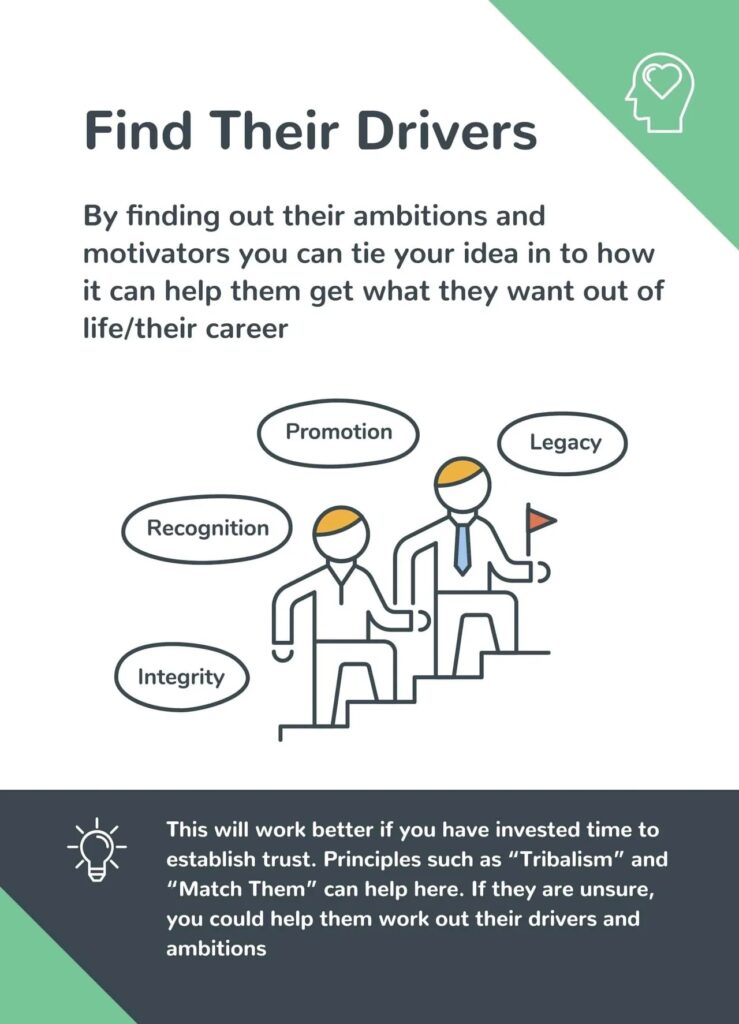Tips For Influencing Management
Posted By - Geoff Watts

One of the most popular topics I get asked about when working with Scrum Masters and agile teams is influencing management to change their behaviour. And I absolutely understand why because ultimately those in positions of power and leadership have a huge influence on the culture and the ability and willingness of the people within the organisation to adopt new ways of working.
And while many understand the primary role of a Scrum Master is to facilitate and support the development of a self-managing, cross-functional team, a large part of their role is that of change agent or cultural architect. Someone who creates a new “that’s the way we do things around here”…yet doing so without any formal authority.
So if I am expected to change the way things happen but can’t create policies or rules then I need to be able to persuade, coach or influence those who can…hence the interest in the topic of influencing management.
Perhaps I’m influencing management to reduce the number of unrealistic deadlines or I need more investment in the infrastructure or I want them to increase the marketing or training budgets so we can reach our goals. Whatever it is, the job of “coaching up” or “persuading power” is a tough but essential part of being a great Scrum Master.
Luckily I have a few tips for you

Empathise and Understand
For me the first step in influencing management is to empathise with their position. Influence requires understand and rapport. At times it can be very difficult to believe but my experience tells me that there are incredibly few people who have an express desire to make work more difficult for you or who are out to sabotage the company.
While at times I can sympathise that it may appear that way, everyone – even management – are trying to do their best to make things work and make things better. They are likely working with different information to you (some of which you may not be allowed access to) which makes a decision that appears to be nonsensical to you, the best choice from their perspective.
If you can assume positive intent from everyone and empathise with the challenges they must be facing, then your job of influencing management will be much more effective. Indeed a study at University of Texas found that persons experiencing high levels of empathic emotion offer help to another even when escape from the situation is easy [1]
Great Scrum Masters learn to understand both the formal and informal structures of the organisation when influencing management. They get to know not only who makes decisions and who holds the power but also who those people are influenced by. Sometimes influencing the influencers of the decision-maker is easier and more effective than attempting to persuade that person directly. Check out my video on Battle Mapping for more on this.
Drivers and Fears
Everyone is driven by two kinds of motivators – “Towards” motivators and “Away From” motivators. Some people have a stronger preference for one than another and knowing that can be useful but we are all affected by both to some degree.
Towards motivators are things that are pulling us towards a better future. This could be a promotion, more fulfilment in the role, environmental sustainability, anything that we believe will be better should we make the change in question.
Away From motivators are things that are pushing us away from our current reality. This could be inefficiency in the current process, conflict, frustration…I almost don’t care where we go instead but staying here is not good.
If we are able to relate our desired change to both of these types of drivers (and these will be different for each individual potentially) then we will have more success at influencing management. If we can tie in what we want to what they want then we have a much better chance of them buying in to the change we are looking to encourage.
As well as drivers, we all also have fears. We worry about the downside of decisions or change. What if I get it wrong? What if it makes things worse? We might not explicitly acknowledge our fears but they are there. We are generally risk-averse and loss-averse as a species which is why we will typically prefer to stick with a broken process that we know than risk changing to a new one…”better the devil you know” is a phrase that often gets used here.
My advice here is to accept and empathise with the concerns they have. Don’t try to brush them off or belittle them – that is counter-productive as not only are you not considered an ally but you also encourage them to entrench themselves in the status quo as they argue the validity of their concerns.

What’s even better here, in my experience is if you can “guess their concerns” without them having to come up with them…”You’re probably worried that this will cost us a lot of money and, given the current cost-cutting targets I believe you have, I would be too. So I’ve done some research on how we can mitigate that.”
This shows you have considered their position and proactively tried to ease the impact for them. Check out my Top Coaching Questions for some tips here.
Benefit and Cost

A critical part of influencing management then is to really get to know and empathise with both their drivers and their fears. Think of it like a simple transaction. If you want someone to buy something (in this case a change) then the value they are getting must outweigh the cost to them of that purchase.
Now value of course is subjective. What one person will pay for something could be vastly different to what another may pay because of how useful it is to them. Equally a glass of water may be significantly more valuable to me at one point in time (on a hot day after some exercise) than another point in time.
Some people may be more risk-averse than others and if that’s the case then they generally need help amplifying the benefits they might get from the change and/or reducing the costs to them. These might not be monetary costs; they may be costs of reputation or social judgement.
Helping someone visualise a future where the change has worked can be very powerful, while exploring side-benefits can also be useful in shifting one side of that “transaction”. Be careful, though, research has shown that sometimes less is more and that the strength of a point is often limited to the strength of the weakest argument to support it.
Perhaps ensuring that they will take the credit for the idea while providing cover for any negative reaction could be useful. Another useful technique for influencing management here is to have a couple of options well thought out and ready to go so they can choose and just give the go-ahead.
Permission & Forgiveness
When influencing management, I’m a big fan of the phrase “just do it”. Rather than ask for permission, I will often prefer to worry about getting forgiveness later on if something doesn’t work out. This can be very useful in many ways:
- The person in question might not be able to give you explicit permission
- If it works out there’s rarely a problem
- It demonstrates proactivity
- The consequences are often lower in reality than they are in our heads
Of course, I do encourage you to do a risk assessment, not just from a cost-benefit perspective but from a reputational and relationship perspective as well. How might my reputation and my relationships with other people be negatively affected by me “just doing it”?
Either way, I would recommend having a well structured and thought-out rationalisation of your decision as well as proof of how you identified and mitigated any risks to hand should you need to explain yourself afterwards.
And one area where permission is definitely important when influencing management is if you are looking to coach them. Coaching does require permission and I wrote another blog post on that in more detail here.
Comfort & Growth

Sometimes just interacting with someone of more senior status can cause us anxiety. We may find it necessary to step outside of our comfort zone simply to have a conversation with, let alone influencing management.
We all know though that most growth – personally and professionally – occurs outside of our comfort zone and the more we step out of it the larger that comfort zone becomes.
If you find yourself anxious about the prospect of influencing management then perhaps try a little Fear Setting which I wrote about here.
Summary

Scrum Masters have a challenging job to do, to create a new version of “this is how things work around here” and that will inevitably involve influencing management to change behaviours, policies and processes.
This is one of the skills we at the Agile Mastery Institute help Scrum Masters to develop in the Scrum Mastery Pathway program.
Making change is hard – even for senior leaders in the organisation – so empathise with them, assume positive intent and align their drivers to the change you are looking to make while empathising with and helping them mitigate the concerns they have.







